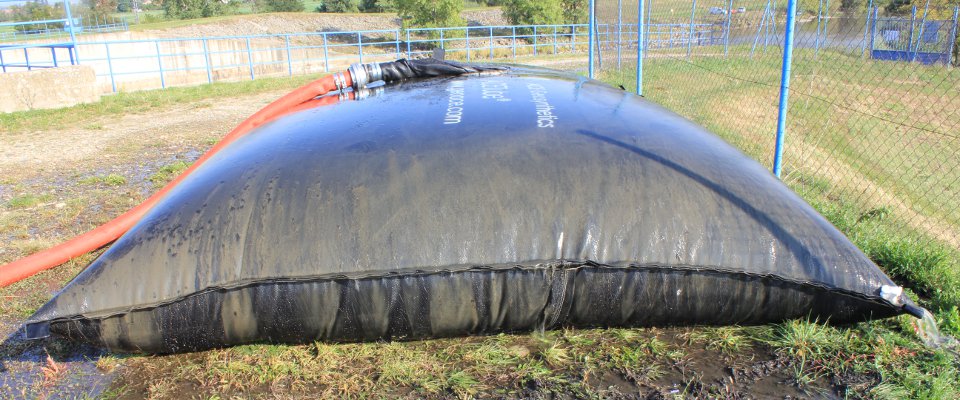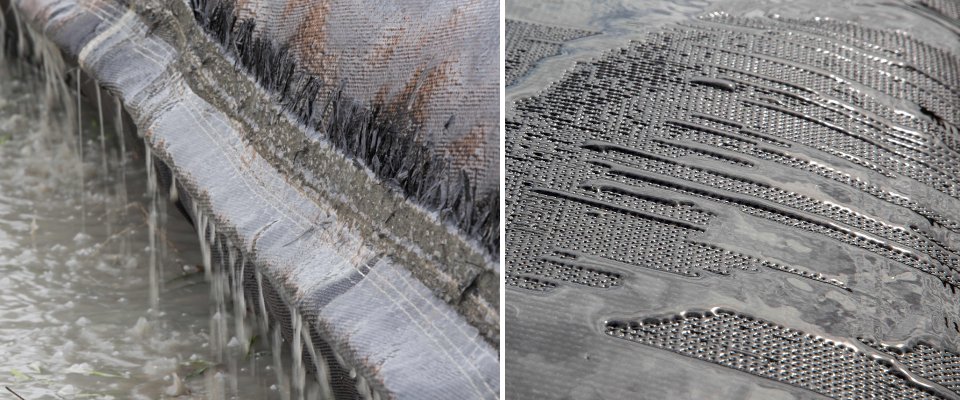
Geotextile tube
Geotextile tubes are a great help when dealing with small to medium sized dredging and dewatering projects. Small projects can really benefit from geotextile tube pros, while the cons are not that visible while the project is small. Let’s see how dewatering in geotextile tubes works.
Tubes are woven of polypropylene or polyester geotextiles so that the spaces between individual fibres are very small. Therefore, the tubes work as a large sieve. The water flows freely through, but the sediment stays inside. The primary force that affects the particles during separation is gravity. However, the power generated by the dredger pump during priming of the tube temporarily overcomes the influence of gravity.
If we treat a fine-grained sediment, we dose an appropriate polymer into the flow of sediment. Proper dosage supports the filtration function of the geotextile tube. This results in a maximal filling up of its volume by sediment and a high purity of the filtrate.
Given that filtrate flows freely from the surface of geotextile tube the first step is always the site preparation.We enable the filtrate flow by underlying geotextile tube by gravel. Clients often want to place the tubes in several layers. This creates horizontally uneven terrain features, that can be later utilized by landscape architects. Proper layer of gravel as a foundation ensures water outbound and makes for stable landscape feature.
The geotextile tube is only useable for one application. After we fill the tube with sediment, we cut it open and the dewatered sediment is subsequently handled. Final product is either disposed in a landfill or reused including the residual material of the geotextile tube. In cases, we use filled tubes to create constructional and stabilizing elements of embankments, dams, barriers, and elements of park structures.
We use various sizes of geotextile tubes for various volumes of separated sediment. This assures, that we can find a solution to any dewatering project, small or big.





